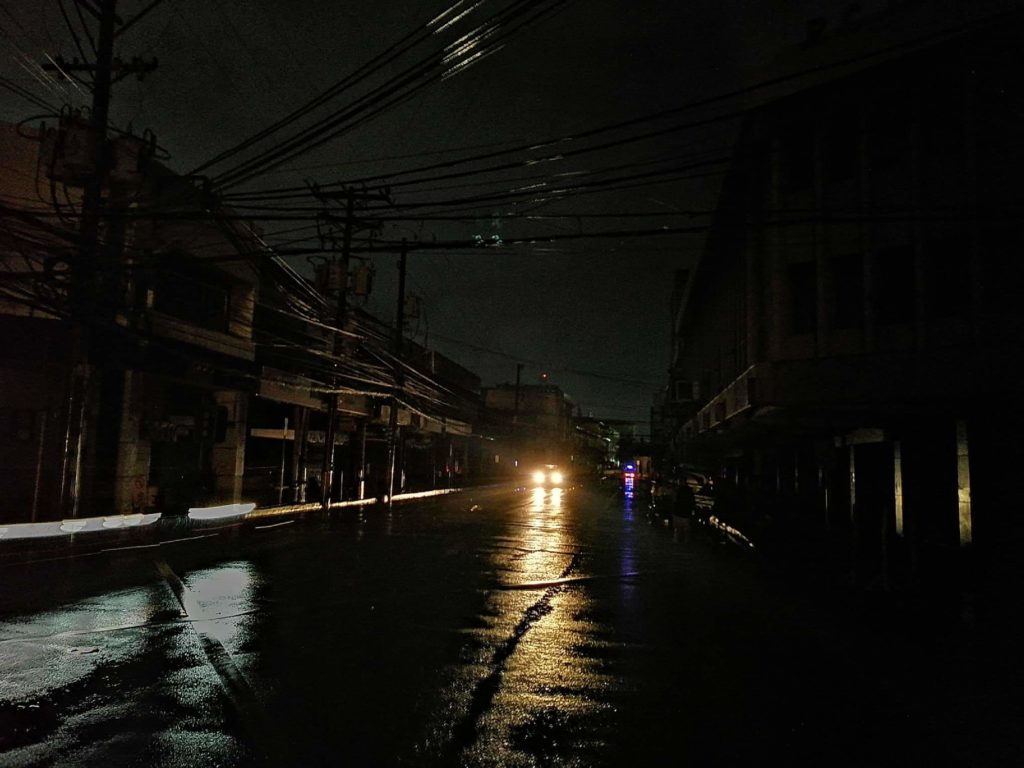Cebu’s power struggle: Race to secure energy future to avoid billions in economic losses

Darkness envelopes Magallanes Street in downtown Cebu City as power went off around 10:30 p.m. on Tuesday, December 24. | CDND PHOTO / Gerard Francisco
CEBU CITY, Philippines – It’s a race against time to ensure that Cebu has a sufficient power supply in the next two years.
Unless it has a new power plant soon, Cebu, the economic and commercial hub in the Visayas and Mindanao regions, might be facing a future of power shortages that could potentially mean losses in billions of pesos.
Public and private stakeholders here warned of a looming energy deficit by 2027 if no new power plants become operational by then.
Growing demand
Demand for energy continues to increase in the island province amid its continued economic development, said Charles Kenneth Co, president of the Cebu Chamber of Commerce and Industry (CCCI).
“Data from the Department of Energy (DOE) indicates that demand for power in Cebu Island will reach around 1,400 megawatts (MW) by 2026,” said Co in a message sent to CDN Digital.
If there’s no more energy added by 2027, Cebu could run short of power, leading to unavoidable blackouts, the CCCI president pointed out.
“We need a power plant solution that can be built fast in time for 2026 or 2027 window,” Co said.
Aside from Co, Cebu Gov. Gwendolyn Garcia also backed calls to put up new power plants here.
“I am looking after the welfare of the investors and businesses who are giving employment to our people. I want to avoid the catastrophic effects of one or two power plants shutting down,” Garcia was quoted on Sugbo News, the provincial government-ran media outlet.
According to data from the National Grid Corporation of the Philippines (NGCP), the current energy supply and demand in the Visayas region remained stable.
Power plants in the region can generate 2,400 MW of electricity, which is 200 MW more than the demand of 2,200 MW. Half of the demand comes from Cebu alone.
Power shortages and economic losses
Without intervention, a potential power shortage in Cebu could severely impact businesses and industries, a scenario local officials and the private sector aim to prevent.
In 2021, the information technology and business process management (ICT-BPM) sector in Cebu suffered losses of up to P80 million due to power outages following Typhoon Odette.
Extrapolating this experience, and the losses incurred by Iloilo province during the Panay Island New Year blackouts, the CCCI estimated that a three-day blackout similar to those in the Western Visayas province could mean financial losses of up to P1.44 billion.
Based on these past events like the New Year blackouts in Panay Island affecting Iloilo province, the CCCI official estimated that a three-day blackout in Cebu similar to that in the Western Visayas could result in financial losses of up to P1.44 billion, mainly affecting the ICT-BPM industry.
Co also noted that this estimate could increase when considering other businesses affected by power shortages.
Power mix
Building a power plant takes time, according to both Co and Garcia. For example, a brand new baseload power plant usually takes up to four years to build – including site development, port facilities, and other support.
“It’s a race against time, so a time-efficient solution would be for an existing power plant to expand or a plant that can be built within the next two years,” said Co.
While there is a need to prioritize green and renewable energy sources, Cebu needs to take advantage of cheap and reliable ones.
“The national government has already laid down the groundwork for the entry of more renewable energy into the grid,” Co said.
“However, we should also continue to take advantage of cheap and reliable energy sources to keep the resulting power rates as low (and even lower) while ensuring the self sufficiency and reliability of the grid,” Co added. /clorenciana
READ MORE:
Why planned power boost to Cebu Island welcomed and needed
As economic engines rev up, tighter power supply looms
Disclaimer: The comments uploaded on this site do not necessarily represent or reflect the views of management and owner of Cebudailynews. We reserve the right to exclude comments that we deem to be inconsistent with our editorial standards.
